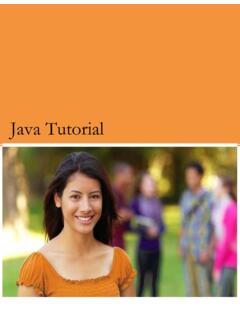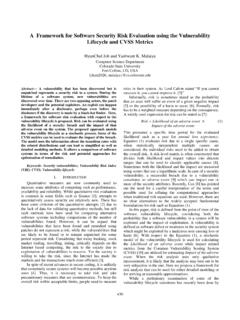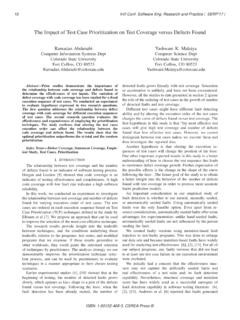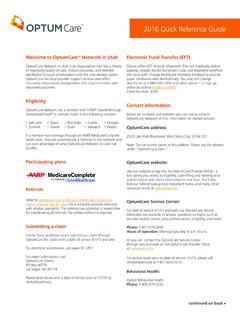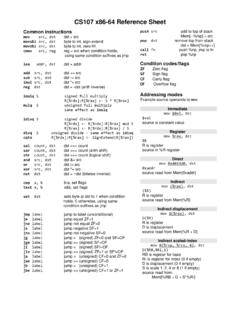Transcription of Java printf( ) Method Quick Reference
1 Java printf( ) Method Quick Reference ( format-string [, arg1, arg2, ] );. Format String: Composed of literals and format specifiers. Arguments are required only if there are format specifiers in the format string. Format specifiers include: flags, width, precision, and conversion characters in the following sequence: % [flags] [width] [.precision] conversion-character ( square brackets denote optional parameters ). Flags: - : left-justify ( default is to right-justify ). + : output a plus ( + ) or minus ( - ) sign for a numerical value 0 : forces numerical values to be zero-padded ( default is blank padding ). , : comma grouping separator (for numbers > 1000). : space will display a minus sign if the number is negative or a space if it is positive Width: Specifies the field width for outputting the argument and represents the minimum number of characters to be written to the output. Include space for expected commas and a decimal point in the determination of the width for numerical values.
2 Precision: Used to restrict the output depending on the conversion. It specifies the number of digits of precision when outputting floating-point values or the length of a substring to extract from a String. Numbers are rounded to the specified precision. Conversion-Characters: d: decimal integer [byte, short, int, long]. f: floating-point number [float, double]. c: character Capital C will uppercase the letter s: String Capital S will uppercase all the letters in the string h: hashcode A hashcode is like an address. This is useful for printing a Reference n : newline Platform specific newline character- use %n instead of \n for greater compatibility Examples: ("Total is: $%,.2f%n", dblTotal);. ("Total: % : ", dblTotal);. ("% 4d", intValue);. ("% \n", stringVal);. String s = "Hello World";. ("The String object %s is at hash code %h%n", s, s);. String class format( ) Method : You can build a formatted String and assign it to a variable using the static format Method in the String class.
3 The use of a format string and argument list is identical to its use in the printf Method . The format Method returns a Reference to a String. Example: String grandTotal = ("Grand Total: %,.2f", dblTotal).
